October 19, 2025
Schönbrunn Palace: Imperial Summer Residence & UNESCO World Heritage Site
Architecture, Culture, History, Palace
This page contains links through which we may earn a small commission should you decide to book a tour from our partner.
Top attractions:
About Schönbrunn Palace
Schönbrunn Palace (Schloss Schönbrunn) is Vienna’s most visited attraction and one of Europe’s most significant Baroque palace complexes. Located in Hietzing (13th district), this former imperial summer residence served the Habsburg dynasty from the early 18th century until the fall of the monarchy in 1918. Today the palace—with its 1,441 rooms, formal gardens, and parkland—forms a UNESCO World Heritage Site visited by around five million people annually.
The palace combines state apartments rich with Rococo decoration, the Great Gallery where the Congress of Vienna convened, and Maria Theresa’s private chambers. Beyond the main building, the complex includes the Privy Garden, Neptune Fountain, Gloriette monument, the world’s oldest zoo, and landscaped gardens stretching across approximately 1 km² / 250 acres.
Visitors choose from several tour routes—the Imperial Tour covers 22 rooms in about 40 minutes, while the Grand Tour explores 40 rooms in roughly one hour. Skip-the-line tickets recommended for weekends and peak season.
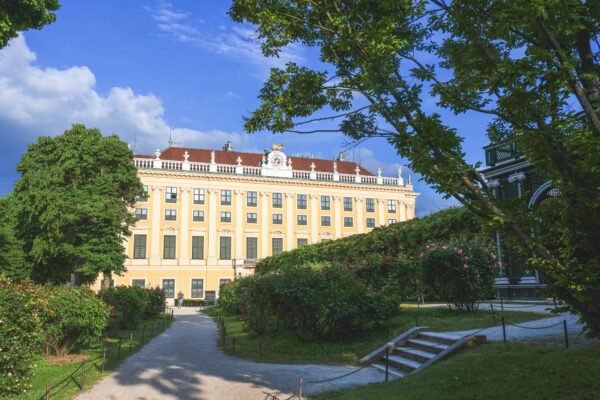
Schönbrunn Palace gardens. Photo by Alis Monte [CC BY-SA 4.0], via Connecting the Dots
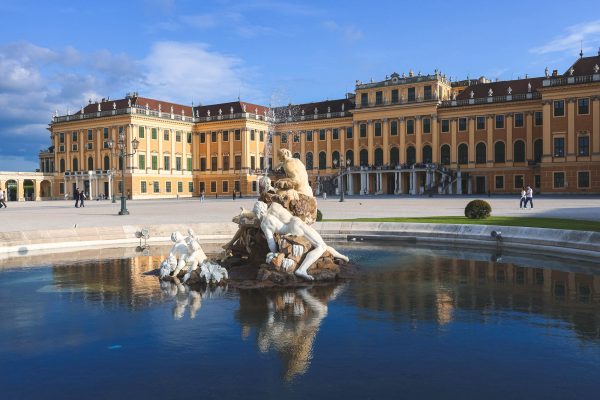
A Parade Court Fountain by Schönbrunn Palace. Photo by Alis Monte [CC BY-SA 4.0], via Connecting the Dots
Schönbrunn Palace Details
- Location: Hietzing (13th district)
- Region: Vienna, Austria
- Address: Schönbrunner Schlossstraße 47, 1130
- Entrance: Main Entrance (Schlossstraße)
- Created: 1696–1749 (late 17th–18th century)
- Architectural Style: Baroque / Rococo
- Entrance fee: Imperial Tour €22; Grand Tour €28; Classic Pass (incl. Gloriette & gardens) €29.90 (as of October 2025)
- Tickets: Available online (online with guide) and at the box office (advance booking strongly recommended)
- Opening hours: Daily 9:00–17:00 (Nov–Mar); 9:00–17:30 (Apr–Jun, Sep–Oct); 9:00–18:30 (Jul–Aug)
- Phone: +43 1 811 13-0
- Transport: U4 Schönbrunn; Tram 10, 58, Bus 10A
- Accessibility: Palace ground floor and gardens accessible; lifts available; wheelchairs for loan at entrance; confirm with the official website for current accessibility options
Location
Current Exhibitions
- Crown Prince Rudolf Apartment — Permanent exhibition about the life and death of Crown Prince Rudolf
- The Schönbrunn Experience — Interactive exhibition on palace history (Wagenburg)
- Imperial Carriage Museum — Historic state coaches and sleighs
History & Development
The name Schönbrunn (“Beautiful Spring”) dates back to Emperor Matthias, who discovered a spring here in 1612. After Turkish sieges destroyed the earlier hunting lodge, Emperor Leopold I commissioned Johann Bernhard Fischer von Erlach to design a Baroque palace in 1696—a grand vision later realized under Maria Theresa.
Under Empress Maria Theresa (1740–1780), Schönbrunn became the heart of Habsburg power. Architect Nikolaus Pacassi remodeled the palace between 1743 and 1749, transforming it into the Rococo residence we see today. The empress held court here, raised sixteen children (including Marie Antoinette), and hosted Mozart’s first imperial performance at age six in the Hall of Mirrors. The formal gardens, Neptune Fountain, and hilltop Gloriette were completed under her reign, creating the unified Baroque landscape.
After the Congress of Vienna (1814–1815)—where European powers redrew the map of Europe in Schönbrunn’s Great Gallery—the palace witnessed the long twilight of Habsburg rule. Emperor Franz Joseph I was born here in 1830, ruled from here for 68 years, and died within these walls in 1916. His successor, Karl I, signed the abdication document in 1918, ending 640 years of Habsburg monarchy. The palace became state property and opened as a museum in 1961; UNESCO inscribed it in 1996 as a masterwork of Baroque art.
If this topic interests you, I’ve written a detailed article about the history of the palace and its gardens, where I uncovered historical details and curiosities through monuments and buildings found in Schönbrunn.
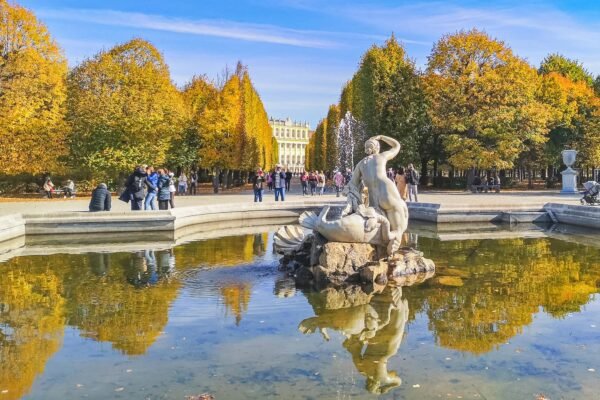
There is no bad season for Schönbrunn. Photo by Alis Monte [CC BY-SA 4.0], via Connecting the Dots
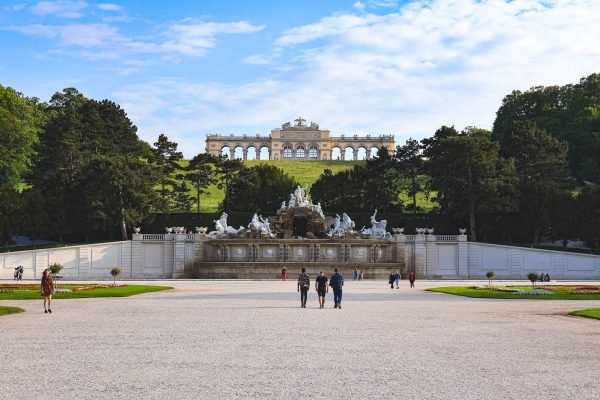
The Gloriette. Photo by Alis Monte [CC BY-SA 4.0], via Connecting the Dots
Why Visit?
Schönbrunn delivers scale and intimacy in equal measure. Walk through Maria Theresa’s breakfast room—small, personal, lined with her children’s embroidery—then step into the Great Gallery where empires were negotiated. The palace doesn’t hide its history: Franz Joseph’s spartan military bedroom contrasts with his wife Sisi’s gymnasium, revealing the personal rifts within imperial protocol.
The gardens reward slow exploration. Most tourists photograph the Neptune Fountain and leave; continue uphill to the Gloriette for views across the entire complex, or lose yourself in the maze, labyrinth, and wooded paths of the western park. The Schönbrunn Zoo (Tiergarten, founded 1752) is the world’s oldest and still operates within its original Baroque pavilions—it’s possible to visit giraffe and panda enclosures inside imperial architecture.
Locals visit for the grounds more than the palace. Early mornings (before 10:00) and late afternoons see joggers, dog walkers, and families using the park as Vienna’s western green lung. Winter brings Christmas markets around the palace forecourt, while summer evening concerts perform in the Orangery or open-air in front of the Neptune Fountain. For first-time visitors, budget three hours minimum: one hour for a tour, two for the gardens and Gloriette.
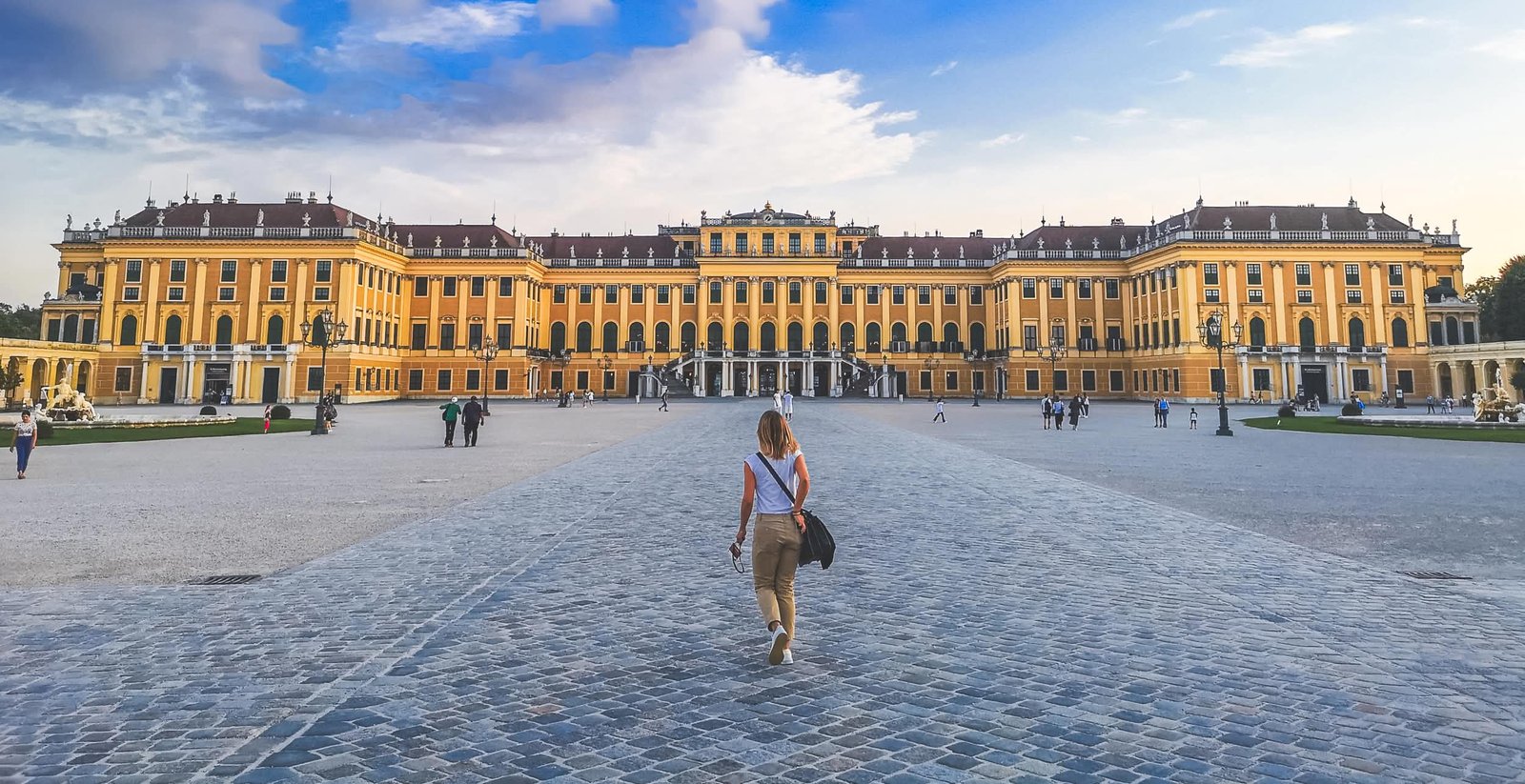
All content and photos by Alis Monte, unless stated differently. If you want to collaborate, contact me on info@ctdots.eu Photo by Alis Monte [CC BY-SA 4.0], via Connecting the Dots
Highlights
Great Gallery. A 40 m / 131 ft ballroom with ceiling frescoes celebrating Maria Theresa’s reign. Site of the 1961 Kennedy-Khrushchev summit and still used for state receptions.
Hall of Mirrors. Gilded Rococo salon where six-year-old Mozart performed for Maria Theresa in 1762; mirrors multiply candlelight into an illusion of infinite space.
Vieux-Laque Room. Walls covered in black-lacquer panels with gold Chinese motifs—part of the 18th-century European craze for Chinoiserie, reflecting both fascination and misunderstanding of Asian art.
Millions Room. Named for its cost: walls inset with 260 Indo-Persian miniatures framed in gilded Rococo cartouches—Maria Theresa’s most extravagant interior.
Gardens & Gloriette. Formal French-style gardens lead uphill to the Gloriette colonnade (1775), offering panoramic views over Vienna. The Neptune Fountain, Palm House (largest in Europe at the time, 1882), and geometric parterre beds remain faithful to 18th-century plans.
Guided Tours
Schönbrunn Palace is the most visited tourist attraction in Austria, and it is also, probably, one of the most important palaces in Europe, if not the world. If you don’t want to miss a detail or simply love good stories from the past, I highly recommend booking one of the best guides to Schönbrunn.
Frequently Asked Questions
Where is Schönbrunn Palace?
In Vienna's 13th district (Hietzing), at Schönbrunner Schlossstraße 47, about 5 km / 3 miles southwest of the historic center.
When was it built?
The current palace was built between 1696 and 1749, primarily under Maria Theresa's reign (1740–1780).
What are the opening hours?
Daily 9:00–17:00 (Nov–Mar); 9:00–17:30 (Apr–Jun, Sep–Oct); 9:00–18:30 (Jul–Aug). Last entry 45 minutes before closing (as of October 2025).
What should I not miss?
The Great Gallery, Hall of Mirrors, Millions Room, Vieux-Laque Room, and the Gloriette with its panoramic terrace.
Is it accessible?
Ground-floor state rooms and gardens are wheelchair accessible. Lifts available; wheelchairs available for loan at the entrance.
How long do I need?
Imperial Tour: 35–50 min; Grand Tour: 50–70 min. Add 1–2 hours for gardens and Gloriette; half-day if visiting the zoo or carriage museum.
Which public transport is best?
U4 to Schönbrunn station (5-min walk to palace entrance); tram 10, 58, or bus 10A to Schloss Schönbrunn stop.
Can I buy tickets online?
Yes—strongly recommended to skip ticket-office queues. Timed-entry slots fill quickly in high season (Apr–Oct) and holidays. Here is a good guided tour: https://www.getyourguide.com/vienna-l7/vienna-skip-the-line-schonbrunn-palace-and-gardens-tour-t861480/?partner_id=CPLDG7A&utm_medium=online_publisher&mkt_cmp=true&cmp=schonbrunn